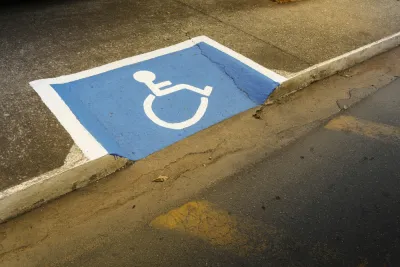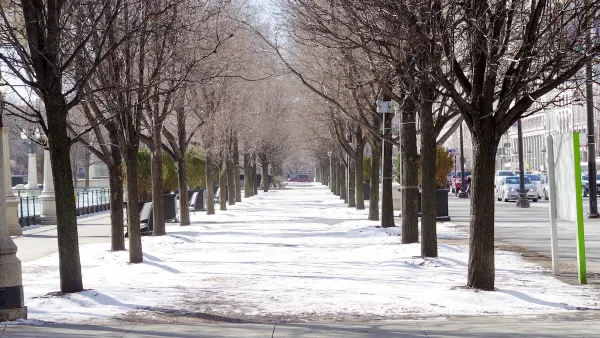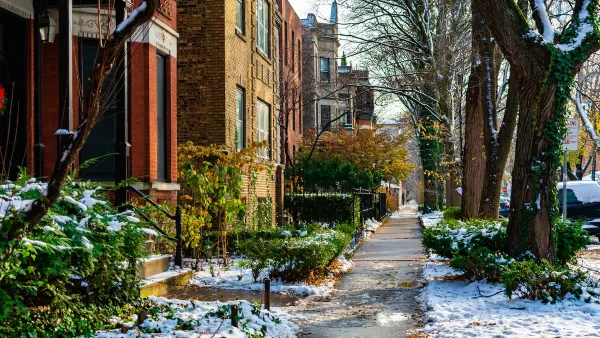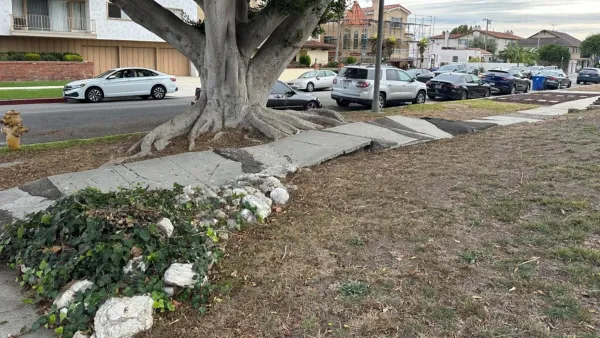Despite the passage of the Americans with Disabilities Act more than 30 years ago, most U.S. cities delay making accessibility improvements to sidewalks until activists bring them to court.

Streetsblog’s Kea Wilson examines why sidewalk accessibility in U.S. cities so often depends on lawsuits filed by mobility advocates despite the existence of the Americans with Disabilities Act (ADA), which ostensibly mandates compliance with accessibility requirements.
As Wilson explains, “Cities like Baltimore, Long Beach, Calif. and Portland, Ore. have all been sued for dangerous sidewalk conditions, but even the suits that advocates win can take decades to translate into real roadway results.”
Of course, funding accessible, complete, and well-maintained networks of sidewalks as the basic civil right they should have always been — and doing it before the lawyers get involved — would make a far greater difference for people with mobility challenges than any lawsuits.
But according to attorney Meredith Weaver, “there are structural reasons why city sidewalk policy can seem so callous — and they help explain why it often takes a multi-year lawsuit to get them to act.” One reason is money, Weaver points out. “I think, given an endless supply of cash, most of them would probably be doing this work already. But without resources, things can fall by the wayside.” Cities end up holding out as long as possible before repairing sidewalks, which would benefit not only people with disabilities but also elderly people, parents with strollers, and anyone with temporary or permanent mobility challenges.
FULL STORY: Why Do People With Disabilities Have to Sue To Get Accessible Sidewalks?

National Parks Layoffs Will Cause Communities to Lose Billions
Thousands of essential park workers were laid off this week, just before the busy spring break season.

Retro-silient?: America’s First “Eco-burb,” The Woodlands Turns 50
A master-planned community north of Houston offers lessons on green infrastructure and resilient design, but falls short of its founder’s lofty affordability and walkability goals.

Delivering for America Plan Will Downgrade Mail Service in at Least 49.5 Percent of Zip Codes
Republican and Democrat lawmakers criticize the plan for its disproportionate negative impact on rural communities.

Test News Post 1
This is a summary

Test News Headline 46
Test for the image on the front page.

Balancing Bombs and Butterflies: How the National Guard Protects a Rare Species
The National Guard at Fort Indiantown Gap uses GIS technology and land management strategies to balance military training with conservation efforts, ensuring the survival of the rare eastern regal fritillary butterfly.
Urban Design for Planners 1: Software Tools
This six-course series explores essential urban design concepts using open source software and equips planners with the tools they need to participate fully in the urban design process.
Planning for Universal Design
Learn the tools for implementing Universal Design in planning regulations.
EMC Planning Group, Inc.
Planetizen
Planetizen
Mpact (formerly Rail~Volution)
Great Falls Development Authority, Inc.
HUDs Office of Policy Development and Research
NYU Wagner Graduate School of Public Service





























